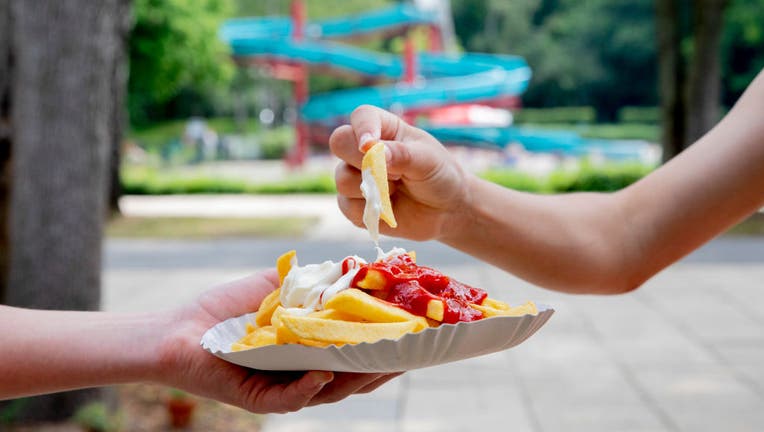California tomato farmers worried extreme drought will increase prices for sauce, ketchup

18 June 2020, Berlin: Children eat chips with ketchup and mayo from the "Tropez" snack bar in the Humboldthain summer pool. (to dpa "French fries: Why do you get hungry in an outdoor swimming pool?") Photo: Christoph Soeder/dpa (Photo by Christoph So
Drought conditions and scorching heat across the western U.S. have already led to extreme water restrictions in California and record-low water levels at Lake Mead in Nevada.
But now a new problem has sprouted up: The extreme weather is affecting tomato crops and could lead to higher prices for your favorite products like sauce, salsa and ketchup.
HOW TO WATCH FOX WEATHER ON TV
California produces about a quarter of the world's tomatoes, and the extreme drought conditions, water restrictions and wildfires are now leaving farmers struggling to meet the demand.
Tom Muller is a Northern California tomato farmer, and he joined FOX Weather to talk about how the extreme weather conditions affect his tomato crops.
"Overall drought here at my ranch. I'm about 15% to 20% short of the acreage that I wanted to plant," he said.
When it comes to water for his tomato plants, Muller said it has been challenging to get enough.
CHICKPEA DIP: EXTREME WEATHER CONDITIONS AFFECTING POPULAR SUPERFOOD CROP
"Our water comes from three sources," he said. "Indian Valley and Clear Lake, that gravity-flow water, and I have zero allocation from them."
Muller said there's another water source from a ranch located at Lake Shasta. But again, he has zero water allocation from that location.
"Right now, we're relying on groundwater," he said.
Like most other crops, water is vital for the successful harvest of tomato crops.
So, how much water does it take to grow tomatoes successfully?
MISSING MUSTARD: WHY THIS CONDIMENT COULD BE ABSENT AT YOUR NEXT COOKOUT
"Everything is based on acre-feet," Muller said. "We used to feral irrigate our tomato crops. That means you put water on the surface through furrows, and in the last 18 to 20 years, we've gone completely to drip irrigation. So, we've saved about 30% of what we were using before."
Drip irrigation is a tube under the ground that is pressurized and provides the exact amount of water needed to ensure the tomato crops survive.
The amount of water is determined by evaporation and by calculating how hot it will be.
"So, the stuff you guys give us, your weather forecasts, are very important to us farmers," Muller said.
SRIRACHA FANS LEFT BURNED AFTER 'UNPRECEDENTED SHORTAGE' OF PEPPER CROP HALTS PRODUCTION
Muller said he hadn't seen a drought situation like what is taking place in California now since he was a child in 1977, which lasted about four years.
"I would say we had a drought. We had big rains here about four years ago," he said. "Last year, it rained about a total of 7 inches, the year before 6 (inches). We're normally at 18 (inches)."
Muller said there had been two 5-inch storms this year. But since all the heavy rain came at once, it didn't do much to help the drought.
"People need to know that these droughts affect people, and the price in the store is going to go up because the price for us is finally going up," he said. "I don't think you're going to see a shortage in the stores. I think you're going to have a higher price, though."
Read more of this story on FOX Weather.

